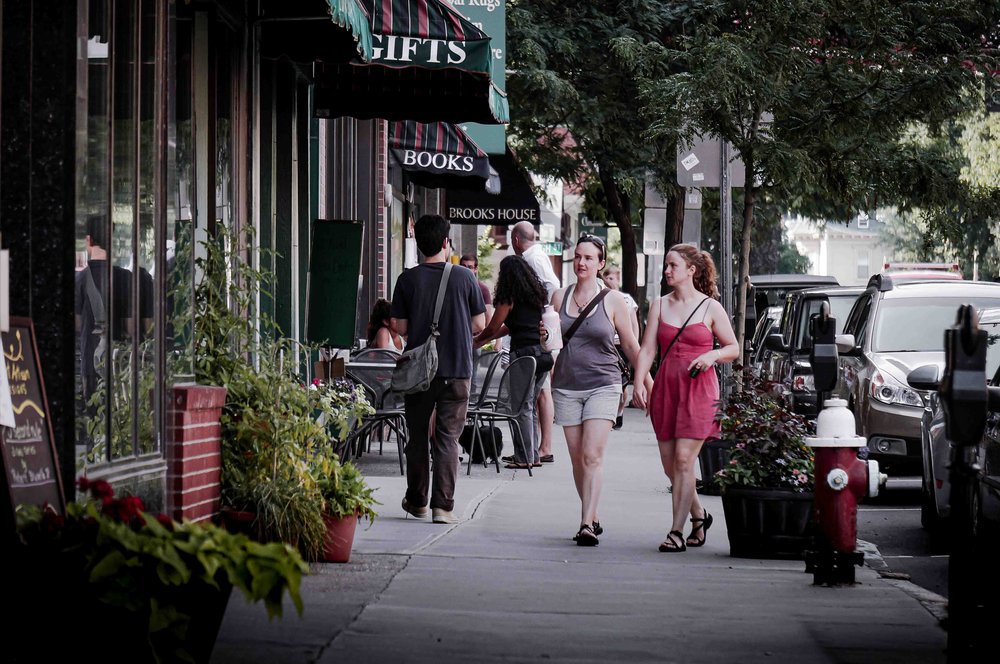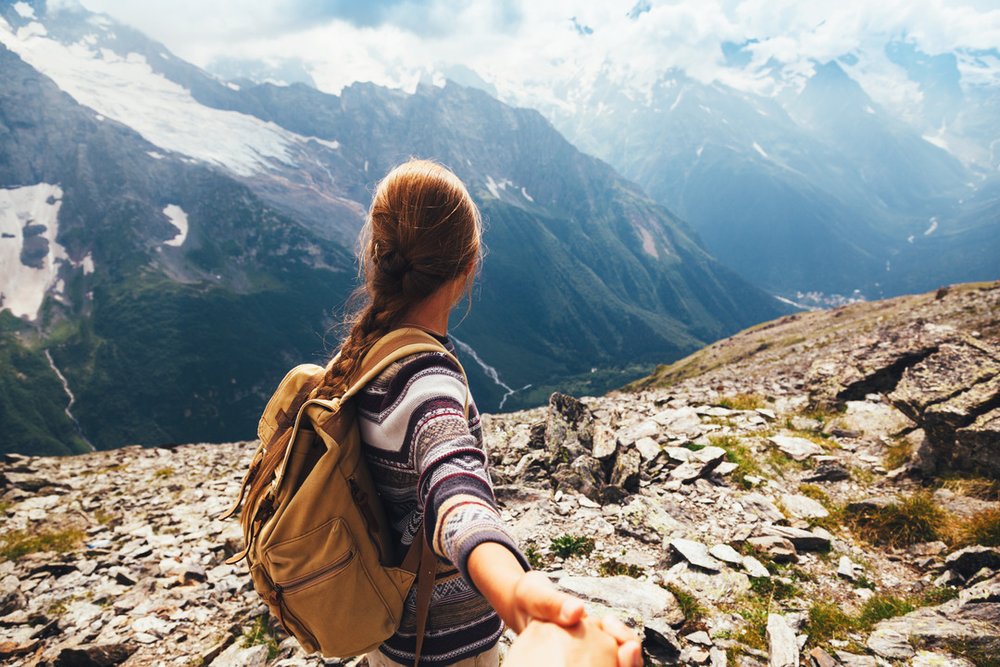About this blog series: This is Part 7 in a series that explores the notion that people are creatures like any other, and there are basic characteristics that we seek, or need, in our habitats. Part 1, Intro is here.
EXPLORATION
Humans are instinctive discoverers, searchers, and adventurers. We are motivated by complex and diverse environments that reveal their layers slowly and beckon us to delve into their mysteries. By contrast, when confronted with a large and featureless space, we turn away, knowing at a glance all there is to learn about the place.
In our work as urban planners, designers, architects, and developers, we usually neglect the opportunity to create explorable environments that stimulate our senses and reveal themselves in layers, not all at once.

Crafting an Explorable Environment: Layers, Senses, and the Human Spirit
Layers are the magic ingredient that sets a truly immersive environment apart from a bland, uninspiring one. Layers give depth, meaning, and a sense of wonder to a space. They are the subtle, intricate details that unfold as we explore an environment, drawing us into a complex web of discovery and learning. Layers fuel our innate curiosity and love for the unknown, making us feel like we’re unearthing hidden treasures with every step we take.
Layers can be found in both natural and built environments. In nature, the vibrant colors of a forest, the symphony of sounds in a wetland, or the awe-inspiring depth of a canyon all captivate us with their layered beauty. Similarly, in urban environments, layers can be seen in the intricate facades of historic buildings, the meandering pathways of a park, or the rich tapestry of a main street.
Sensory Placemaking
Our senses play an essential role in our experience of an environment. An explorable environment appeals not only to our sense of sight but also to our sense of touch, smell, sound, and even taste. The more we engage our senses, the more connected we feel to a place and the more motivated we are to explore its depths.
Consider the difference between walking through a sterile, monochromatic parking lot and strolling through a bustling outdoor market. The former offers little sensory stimulation, while the latter immerses us in a cacophony of sounds, a kaleidoscope of colors, and an array of enticing smells. Our senses are awakened, and we’re compelled to explore, discover, and engage with the environment around us.

As designers, planners, and creators, we need to consider the full range of human senses when crafting an explorable environment. This might mean incorporating natural elements like water and vegetation, using diverse materials and textures, or designing spaces that encourage social interaction and engagement.
Urban density and mixed-use development are also essential factors in creating explorable environments. By incorporating a mix of residential, commercial, and public spaces within close proximity, cities can create vibrant neighborhoods that offer a variety of experiences and destinations within walking distance. This encourages people to explore their surroundings on foot, uncovering hidden gems and fostering a sense of community and belonging.

The Value of the Explorable Environment
Creating an explorable environment is not just about aesthetics or personal preference; it has real-world implications for our well-being, our communities, and our planet. Research has shown that engaging with complex, layered environments can have a range of positive effects on our mental and physical health.
By designing spaces that encourage exploration and discovery, we can foster a deeper level of place attachment, leading to a greater sense of belonging and stewardship. In turn, this can contribute to more vibrant, resilient, and sustainable communities.
Moreover, explorable environments can also support local economies by attracting visitors and fostering a sense of place. Tourists are drawn to destinations that offer unique, engaging experiences, and a well-designed environment can be a powerful tool for economic development.


The Challenge of Creating Explorable Environments
Creating an explorable environment is not without its challenges. In an era of rapid urbanization, population growth, and environmental degradation, it can be difficult to prioritize the creation of layered, sensory-rich spaces. Planners and designers are often under pressure to maximize efficiency and minimize costs, leading to the proliferation of homogeneous, sterile environments.
To create explorable environments that inspire, engage, and connect us, we must take a holistic approach to design and planning. This involves:
- Prioritizing diversity and complexity: Embrace a mix of uses, styles, and materials in the design process. Consider incorporating natural elements, public art, and cultural landmarks to create a rich, multifaceted environment.
- Designing for sensory engagement: Ensure that spaces engage all the senses, from the sounds of a bustling plaza to the smell of fresh flowers in a park. Use materials and textures that invite touch and create visually stimulating spaces.
- Encouraging social interaction: Design spaces that promote human interaction and connection, such as communal seating areas, outdoor cafes, or shared green spaces. By fostering a sense of community, we can create environments that people will want to explore and engage with.
- Embracing adaptability and change: Recognize that environments will evolve over time, and design spaces that can be adapted to changing needs and uses. This might involve creating flexible public spaces that can host a variety of events and activities or designing buildings with versatile layouts.
- Promoting sustainability and resilience: Design environments that support ecological health, minimize resource consumption, and adapt to the challenges of climate change. By creating spaces that are both environmentally responsible and explorable, we can foster a more sustainable future.

By creating spaces that inspire exploration, engage our senses, and reveal their layers through discovery, we connect with our innate love for adventure and curiosity, fostering more vibrant, resilient, and sustainable communities in the process. The task may be challenging, but the rewards are worth the effort.
Series Conclusion
In this series, “An Ecological Approach to Placemaking,” we have examined how placemaking is not merely about constructing buildings or designing public spaces; it is an interconnected process that considers the ecological, social, economic, and psychological factors that shape our built environment. By understanding and embracing these elements, we can create places that truly resonate with the human spirit and foster a sense of belonging, well-being, and stewardship.
Throughout the series, we have emphasized the importance of a holistic approach to placemaking, one that recognizes and prioritizes the diverse needs of both people and the natural environment. We have delved into the significance of incorporating natural elements into our urban landscapes, the value of engaging our senses and innate need for exploration, and the crucial role of community engagement and social interaction in creating places that are truly alive and thriving.
As we move forward in our collective efforts to create sustainable, resilient, and livable communities, it is essential that we continue to learn from and be inspired by the wisdom of nature. An ecological approach to placemaking offers us a valuable framework for understanding the complex relationships between humans and their environment, and for designing spaces that are responsive to these relationships.


